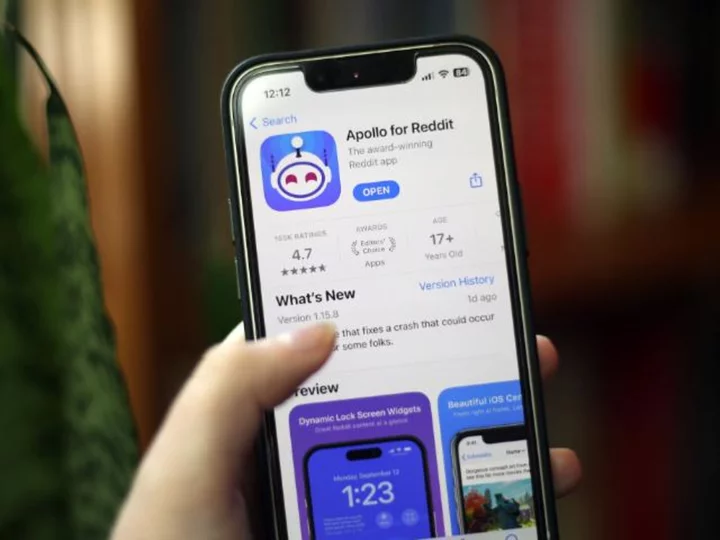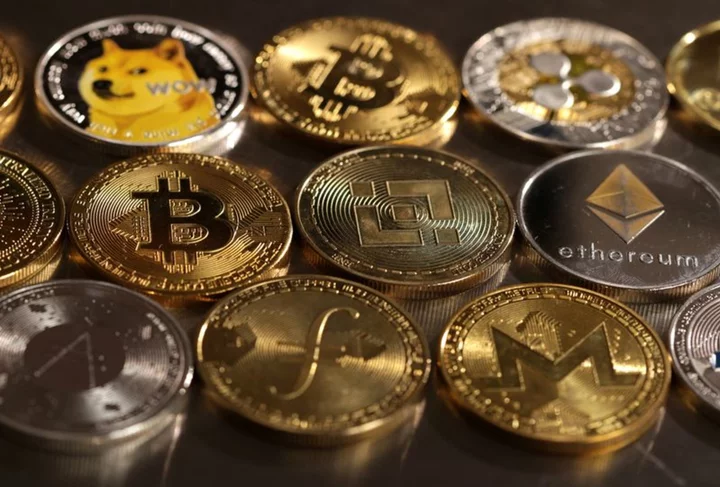For weeks, Treasury Secretary Janet Yellen had been consistently telling lawmakers to act soon because the X-date, when the US could default, could occur as soon as June 1.
On Friday, she updated that prediction, giving debt ceiling negotiators an extra four days. The Treasury's new earliest X-date is June 5.
It still may not be enough time.
Even if White House and congressional negotiators can reach a deal about how to raise the $31.4 trillion national debt ceiling, it will take days to whip up the votes in the House and Senate and enact the agreement into law.
Yellen's new June 5 X-date warning, while the official word of the Treasury Department, is but one estimate of many -- think tanks and banks also have predictions -- that range from early June to later in the summer.
I talked to CNN's Tami Luhby, who covers the debt ceiling and the X-date predictions, to figure out when we may have a better sense of when the default could actually occur.
Excerpts of our conversation, conducted by phone, are below.
Why is it hard to pinpoint the X-date?
WOLF: Why is it so hard to figure out when the default could occur?
LUHBY: Because there's not one single measure that determines the X-date. The Treasury is looking at five different metrics, at least.
One thing that's very important is the operating cash balance, but that fluctuates regularly based on how much Treasury takes in in tax collections.
Part of the reason why Yellen is saying that we could start defaulting on our obligations as soon as early June is because the 2022 tax collections that came in in April were weaker than expected. She doesn't know in advance how much revenue the government will actually take in.
But you can't just look at the daily operating cash balance. You will also need to look at the "extraordinary measures" that Treasury put in place in January when we hit the debt ceiling.
Those are now about $92 billion left (as of last week). And then there are other measures such as intragovernmental debt. The timing of the X-date will depend on how much revenue comes in and how much in obligations Treasury has to pay out each day, because it varies.
WOLF: So it's a little more complicated than just, the government borrows an amount to cover its shortfall up to the debt ceiling.
LUHBY: The US government, the federal government, operates at a deficit. So it doesn't bring in as much money as it has promised to spend, so it needs to borrow to make up the difference.
Congress, more than 100 years ago, put a cap on that borrowing, and we've hit that cap. So at some point this year, possibly as soon as next week, Treasury won't be able to continue paying all of the bills on time if it isn't able to borrow. It has to borrow to be able to pay all of our obligations.
In one scenario, the government would avoid default for much of the summer
WOLF: One of the things that has Republicans questioning Yellen's math on the X-date is this idea that if the government can limp along until mid-June, there will be enough in tax collections that they can get through a larger portion of the summer. If they can make it a little ways, then they can go much longer. How exactly does that work?
LUHBY: Republicans are arguing for more transparency about how Yellen is coming up with her prediction of early June. But she is specifically saying early June, because on June 15, second quarter estimated tax payments are due, so the Treasury will get a certain amount of money coming in.
Because tax collections have been weaker than expected, we don't know how much money will come in. That's one thing.
And then at the end of June, Treasury can also take advantage of another one of these extraordinary measures that it has been using since January to be able to continue funding our obligations. There have been a few estimates about that, but the one estimate that I've been using is $145 billion.
(Note: The $145 billion in late June extraordinary measures would come from delaying investment in civil service and postal service retirement plans, according to the Congressional Budget Office.)
So if Treasury gets tax payments June 15 and gets the extraordinary measure at the end of the month, a lot of folks are forecasting that they, the Treasury, will be able to limp along until the end of July.
But Yellen has said, and some of her deputies have said, that it will be very difficult for Treasury to get to June 15.
And other estimates from the Congressional Budget Office, the Bipartisan Policy Center, various investment banks -- Goldman Sachs, JPMorgan -- they are all saying there's a significant risk that Treasury will not make it to June 15. The estimates vary anywhere from June 2 to June 14.
The X-date is not exactly the US running out of cash
WOLF: I have tried to shorthand that crossing the X-date is like the government running out of cash. You have cautioned that is the wrong way to look at it. How should we look at crossing the X-date?
LUHBY: Well, to me, running out of cash means bankrupt, or not having any money. But the government is always collecting money because there are always tax revenues coming in.
So it's not fully running out of cash. It's just not going to have enough to be able to pay all the bills in full and on time.
RELATED: See a flow chart of what happens if the US can't pay all its bills
When you say "running out of cash," it makes me think that federal workers will not get their paychecks and Social Security beneficiaries will not get their monthly benefits.
But we don't know exactly what Treasury would do. Presumably, when Treasury has enough money from the tax revenue that's constantly coming in, it will pay those obligations. The obligations will be delayed, not halted.
WOLF: The obligations don't go away, in other words.
LUHBY: No, they certainly don't go away. But what I'm saying is even if Congress doesn't raise the debt limit, once we cross the X-date, during the time that we're in this sort of broader idea of "default," payments will be made.
They're just not going to be made in full and on time. They'll be delayed because the government will have cash -- it just won't have enough cash.
Treasury won't share a post-default plan
WOLF: It is frustrating, in trying to cover this, that the government hasn't told us with much detail what kind of choices they'll make about which payments they will make.
LUHBY: They refuse to say. So we don't know what they will do.
A lot of experts expect that they will do what's called prioritizing payments, and that they will pay the obligations on our national debt first. And then they presumably will pay other obligations after that, but we don't know that to be actually a fact.
WOLF: Have they explained why they won't tell us with more specificity how they would prioritize the obligations?
LUHBY: What Janet Yellen says is that there is no good plan B, there is no good alternative, and that Congress must raise the debt limit. That all bills must be paid in full and on time.
WOLF: Failure is not an option.
LUHBY: Right. That's what she says, repeatedly. Because she's been asked this repeatedly.
When will we have a better idea?
WOLF: Do you expect that we will have more specificity as we get closer, or will we just wake up one day and Janet Yellen says today is the X-date?
LUHBY: They have not signaled what they will do, but Yellen has been updating Congress regularly on the approach of the X-date, and so one would think that she will signal to Congress as it gets closer.









